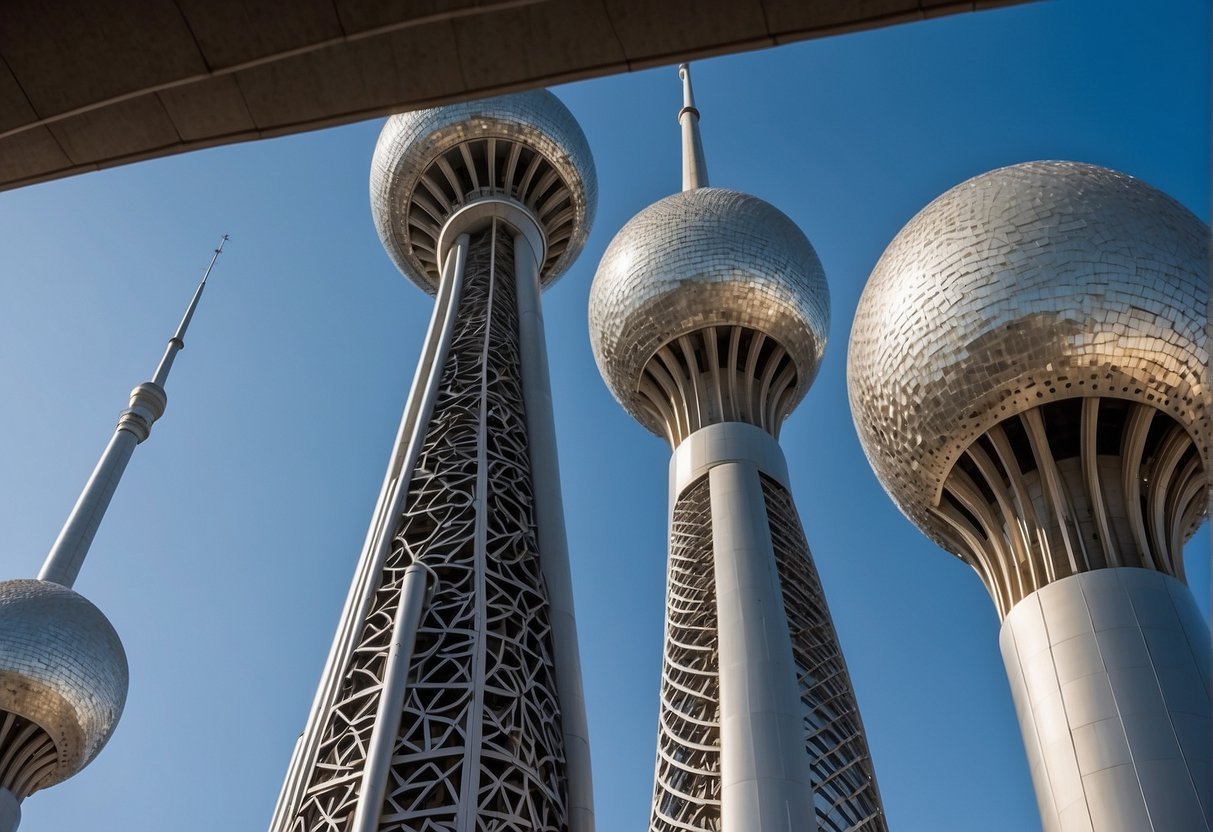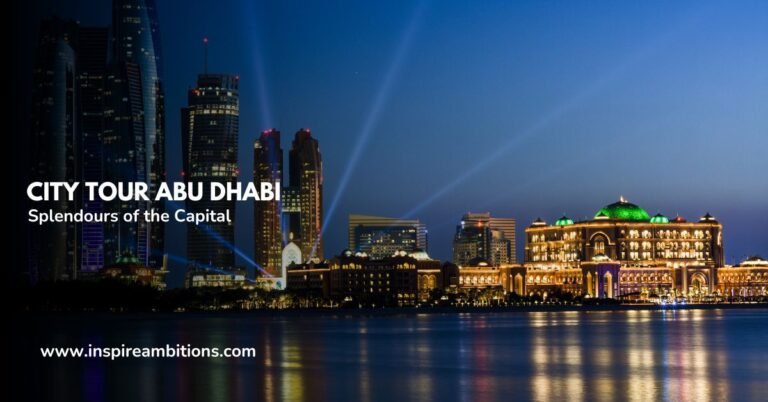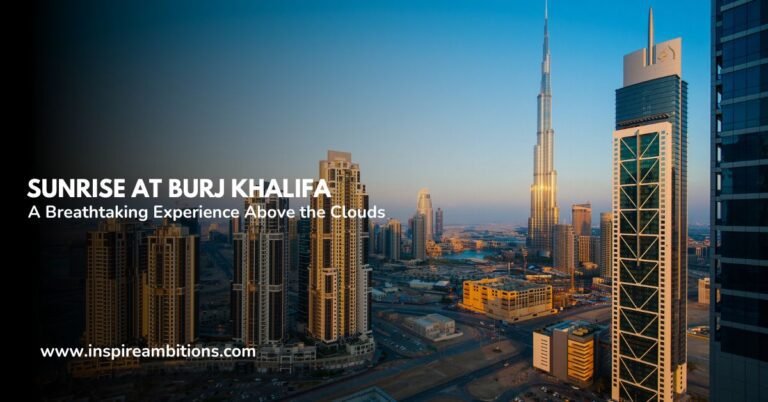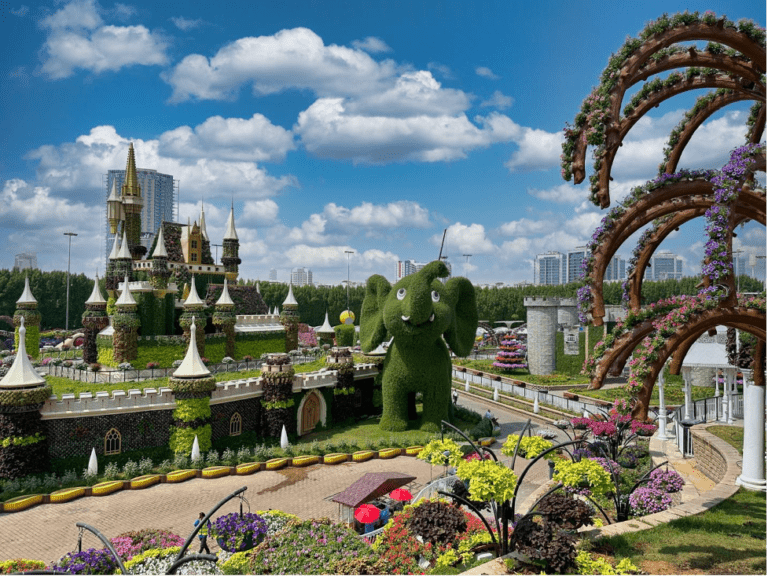¿Qué son las Torres de Kuwait? – Un símbolo icónico de elegancia arquitectónica
Kuwait Towers stand as an emblem of modernity and progress in the heart of Kuwait City, their silhouette etched against the canvas of the sky.
Often seen embodying the nation’s aspirations and cultural resurgence, these towers are more than just a tourist attraction; they represent a fusion of innovation, art, and functionality. Rising high above the coastline, they serve as a visual spectacle and an integral part of the country’s infrastructure.

Introduced in the 1970s, the Kuwait Towers were designed by the Danish architect Malene Bjorn and are part of the more extensive Wait Water Towers system. Visitors marvel at the distinctive blue-green spheres adorning their structure, providing a panoramic view of the city and housing a restaurant that rotates to give diners a 360-degree perspective.
Beyond their architectural allure, the towers hold water reserves, symbolizing the vital resource’s careful management—a juxtaposition of practicality and aesthetic appeal.
What is Kuwait Towers? – Key Takeaways
- Kuwait Towers symbolize the economic resurgence and cultural identity of Kuwait.
- The towers combine utility and aesthetics with a design incorporating water storage and leisure facilities.
- They are recognized landmarks, contributing to the Kuwait City skyline and offering panoramic views to visitors.
Kuwait Towers Overview
A landmark symbolizing progress and cultural identity, the Kuwait Towers are as much a celebration of engineering as they are an emblem of national pride in Kuwait.
Architectural Significance
Designed by Swedish architects Sune Lindström and Malene Björn and erected by the Yugoslavian company VBB (Vattenbyggnadsbyrån), Torres de Kuwait stand tall as a technical and artistic feat. Conceived in 1960 and inaugurated in 1979, the towers blend reinforced and prestressed concrete.
Their facades shimmer with enamelled steel discs, reflecting the sun’s glare. The giant tower is adorned with a revolving observation deck and restaurant, offering panoramic views of Kuwait City.
Contexto histórico
Embodying Kuwait’s rapid modernization post-oil boom, the Towers were a state-of-the-art project when completed. They incorporate elements of traditional Islamic design, such as the minaret, mirrored in the tower’s spherical sections.
One of the towers was bestowed with the Aga Khan Award for Architecture, signifying its cultural resonance. As an iconic building and a national monument, they represent the unity and growth of the nation, a symbol that was reaffirmed when the towers survived the Iraqi invasion in 1990.
Cultural and Functional Aspects
The Kuwait Towers are a monumental synthesis of cultural representation and multifunctional prowess, offering recreational facilities and significant economic contributions.
Recreational Facilities
A focal point of interest within the Torres de Kuwait is the rotating Observatory Sphere, which affords panoramic views of the city and the glistening waters of the Golfo pérsico. Visitors can indulge in various dining experiences, from casual cafeterías to the renowned Al Waha restaurante in the central tower.
The towers also host multiple events, including the spectacular fireworks festival. Elevators grant access to these delights for ease, ensuring a seamless visitor experience.
Economic and Infrastructure Contributions
Since their opening, the Kuwait Towers have served a dual purpose; besides being an integral atracción turística, they are a critical component of the water distribution project handled by the Ministry of Electricity and Water. El water tanks within the towers, designed by the Swedish engineering firm Sweco, play a pivotal role in the water supply system and the seawater distillation plants.
Además, el estacionamiento facilities and the ground floor reception hall have bolstered Kuwait City’s infrastructure, further establishing its place as a hub of modern Western technology intertwined with Arab culture.






